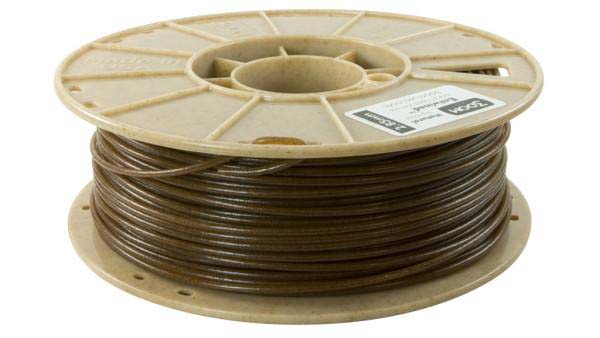
Hemp-Based Thermoplastics
Hemp-based thermoplastics are a new class of materials used in 3D printing, which offer several advantages over traditional plastics. Hemp, a fast-growing and sustainable crop, is a rich source of cellulose, the primary component of thermoplastics. When processed, hemp cellulose can be used to make a biodegradable and eco-friendly alternative to traditional plastics, which are largely derived from non-renewable fossil fuels. In this article, we will explore the advantages, manufacturing process, properties, applications, and cost analysis of hemp-based thermoplastics for 3D printing.
Advantages of Hemp as a 3D Printing Material
Hemp offers several advantages over traditional plastics as a 3D printing material. Firstly, it is a renewable and sustainable crop, which can be grown without the need for pesticides or fertilizers. Secondly, hemp-based thermoplastics are biodegradable, which means that they can break down naturally in the environment, unlike traditional plastics, which can take hundreds of years to decompose. Thirdly, hemp-based thermoplastics have excellent mechanical properties, including high strength, rigidity, and thermal stability, making them ideal for 3D printing applications.
Manufacturing Process of Hemp-Based Thermoplastics
The manufacturing process of hemp-based thermoplastics involves several steps, including harvesting, retting, decortication, pulping, and extrusion. Harvesting involves cutting the hemp plants and separating the stalks from the leaves and flowers. Retting is the process of breaking down the outer layer of the stalks to expose the fibers. Decortication involves removing the inner woody core from the fibers. Pulping involves grinding the fibers into a fine powder, which is then mixed with a binder and heated to form a thermoplastic resin. Finally, the resin is extruded into filaments, which can be used in 3D printing.
Properties and Characteristics of Hemp-Based Thermoplastics
Hemp-based thermoplastics have several properties and characteristics that make them ideal for 3D printing. They have excellent mechanical properties, including high strength, rigidity, and thermal stability, which make them suitable for a range of applications. They are also biodegradable, which means that they can break down naturally in the environment. Hemp-based thermoplastics have a low melting point, which makes them easy to extrude and shape. They are also lightweight, which makes them ideal for applications that require low weight and high strength.
Applications of Hemp-Based Thermoplastics in 3D Printing
Hemp-based thermoplastics have a range of applications in 3D printing, including automotive parts, consumer goods, medical devices, and building materials. They can be used to make lightweight and high-strength parts, which are durable and biodegradable. Hemp-based thermoplastics are also ideal for producing complex geometries and thin-walled structures, which are difficult to produce using traditional manufacturing methods.
Hemp-Based Thermoplastics vs. Traditional Plastics
Hemp-based thermoplastics offer several advantages over traditional plastics, including sustainability, biodegradability, and mechanical properties. Traditional plastics, which are largely derived from non-renewable fossil fuels, have a negative impact on the environment and contribute to climate change. Hemp-based thermoplastics, on the other hand, are derived from a renewable and sustainable crop and can break down naturally in the environment. Hemp-based thermoplastics also have excellent mechanical properties, including high strength, rigidity, and thermal stability, which make them suitable for a range of applications.
Sustainability and Environmental Benefits of Hemp-Based Thermoplastics
Hemp-based thermoplastics offer several sustainability and environmental benefits. Firstly, hemp is a fast-growing and sustainable crop, which can be grown without the need for pesticides or fertilizers. This makes hemp-based thermoplastics a renewable and eco-friendly alternative to traditional plastics. Secondly, hemp-based thermoplastics are biodegradable, which means that they can break down naturally in the environment, unlike traditional plastics, which can take hundreds of years to decompose. Thirdly, hemp-based thermoplastics have a lower carbon footprint than traditional plastics, which contributes to reducing greenhouse gas emissions and mitigating climate change.
Cost Analysis of Hemp-Based Thermoplastics for 3D Printing
The cost of hemp-based thermoplastics for 3D printing is currently higher than traditional plastics due to the limited availability and high processing costs. However, as the demand for sustainable and eco-friendly materials increases, the cost of hemp-based thermoplastics is likely to decrease. Moreover, the environmental and social benefits of hemp-based thermoplastics may offset the higher initial cost in the long run.
Challenges and Limitations of Hemp-Based Thermoplastics
Hemp-based thermoplastics face several challenges and limitations, including limited availability, high processing costs, and lack of standards and regulations. Hemp is still a relatively new crop and the infrastructure for processing and manufacturing hemp-based thermoplastics is still developing. Moreover, the lack of standardized testing and certification processes makes it difficult to ensure the quality and consistency of hemp-based thermoplastics.
Future of Hemp-Based Thermoplastics in 3D Printing
The future of hemp-based thermoplastics in 3D printing looks promising, as the demand for sustainable and eco-friendly materials increases. The development of new processing techniques and the establishment of standards and regulations are likely to drive the growth of the hemp-based thermoplastics market. Moreover, the potential applications of hemp-based thermoplastics in a range of industries, including automotive, aerospace, and building construction, are likely to fuel the demand for this material.
Case Studies: Hemp-Based 3D Printing Success Stories
Several success stories demonstrate the potential of hemp-based thermoplastics in 3D printing. For example, a Canadian company called Motif 3D used hemp-based thermoplastics to produce a 3D-printed electric car, which was showcased at the Vancouver Auto Show in 2018. Another company called Hemp Plastic Company produces a range of hemp-based thermoplastics, which are used in a variety of applications, including packaging, toys, and industrial products.
Hemp-Based Thermoplastics as a Promising Future of 3D Printing
Hemp-based thermoplastics offer a sustainable and eco-friendly alternative to traditional plastics, which have a negative impact on the environment and contribute to climate change. The excellent mechanical properties, biodegradability, and low carbon footprint of hemp-based thermoplastics make them ideal for a range of applications in 3D printing, including automotive parts, consumer goods, medical devices, and building materials. While there are still challenges and limitations to overcome, the future of hemp-based thermoplastics in 3D printing looks promising, as the demand for sustainable and eco-friendly materials increases.














